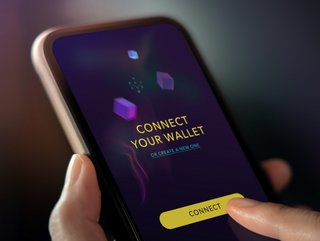Unfolding e-wallets and the evolution of the payments sector

The use of cash continues to diminish across modern society, with notes and coins being seen as increasingly archaic in the payments world; meanwhile, digital wallets – also known as e-wallets – are thriving.
E-wallets are essentially financial transaction apps that can be run through mobile devices. They securely store payment information and passwords, allowing users to pay via those devices rather than carrying around payment cards.
Setting one up couldn’t be simpler: the user downloads the app; enters their credit card, debit card, or banking information; and then uses their device as a contactless payment portal through tap-to-pay tech.
E-wallet technology innovations
According to reports, the very first e-wallet – established as far back as 1997 – was linked to the first digital payment system. Coca-Cola built a payment system that enabled transactions to be carried out via text message, allowing them to buy soft drinks through their mobile phones. This event was the launchpad of the modern-day e-wallet, although the systems and solutions employed today operate on multiple levels, such as online and point-of-sale.
Current innovations used by mobile devices and digital wallets are:
- Magnetic secure transmission (MST): Using the same technology generated by a magnetic card strip, mobile devices generate the encrypted field that is the point of sale, which can be read by digital payment machines.
- QR codes: Quick response codes are matrix barcodes that utilise the wallet's scanning system to initiate payment.
- Near field communication (NFC): A technology that enables two smart devices to engage and share information via electromagnetic signals. Each device needs to be within approximately 4cm of the other to carry out a transaction.
The benefits of e-wallets
At this point, the benefits of using e-wallets should be fairly clear, but with one defining factor outshining the rest – namely, security. When customers input their card details via an online portal to buy an item online, there is a risk that it's an unsafe site, a scam to steal card details and then empty bank accounts.
E-wallets enable users to store a small amount of money electronically so that even if a scammer attempts to steal the details, there’s no danger of an account being drained of funds.
They are also easy to open, and convenient to use, since customers don't have the additional responsibility of carrying around payment cards. Additionally, they are very handy for international travellers, since they are not attached to a specific country or location.
Essentially, e-wallets are the natural evolution of the digital payments space. According to Brad Hyett, CEO of phos – a UK-based fintech that specialises in point-of-sale (PoS) innovations for merchants – contactless payments have provided an easy, convenient, and safe way to pay for goods in store.
He says: “As contactless payments become more popular, the finance industry must step up to the challenge of ensuring that merchants are equipped with the right payment solutions to accept payments in a secure, efficient, and simple manner.
“Contactless payments increased by 12% in 2020, spurred on by consumers looking to mitigate their use of cash to prevent the spread of COVID-19 and the demand for convenience; the simplicity of contactless card or e-wallet payments have proven to be the preferred option.
“Over the next five years, we will see the consumer-driven consolidation of payment options become the standard. With cards, BNPL, open banking, crypto, and loyalty cards all becoming commonly available in all transaction channels.”
Hyett adds: “Consumers want to be able to use their preferred payment methods, and it is imperative that businesses are equipped with the right solutions to meet these growing needs.”
Super e-wallets and the collection of data
Along with super apps comes the concept of the super e-wallet. No longer just a one-trick payment pony like its predecessor, the super e-wallet offers a range of payment services to the user. What it also does, though, is provide lots of data on the customer, ostensibly helping fintech companies create personalised services for their users.
They have numerous digital payment use-cases, including storing electric vehicles’ key information, membership cards, gift cards, tickets to events, travel tickets, users’ driver’s licence. and more. E-wallets are also increasingly being used to trade cryptocurrencies – their introduction has enabled people to use a wide manner of financial services previously not open to them. In this way, e-wallets have helped to increase financial inclusion.
The super app e-wallet concept has taken off in Asia, in particular, where the number of unbanked people is high, but mobile adoption is still higher. OMG Indonesia’s Deependra Shekhawat said recently: “With Indonesians integrating e-wallets into their daily lives and using the same environment for different purchases and purposes, it becomes easy to track their digital footprint.”
Eunice Tan of TSLA, meanwhile, points out that the growing frequency of e-wallet adoption is rooted in the belief that it presents a more glamorous lifestyle. “For many young people in Asia, virtual banking and e-wallets represent excitement, aspiration, and a gateway to living life more richly.”
E-wallets and CBDCs
As the global financial market becomes increasingly integrated, regulated, and borderless, the case for e-wallets has grown. CBDCs will be a primary asset for e-wallets when their worldwide introduction begins in earnest.
China is leading the charge with this technology. In October of 2020, for example, the government had already begun piloting its digital yuan, giving 50,000 residents of the Luohu district 200 yuan each in a digital wallet to test the transactional process and its new digital currency. The digital wallets were distributed via iShenzhen – a government-operated blockchain public services app.
China’s digital currency has been in the pipeline for the past eight years; it's currently available to users in 23 cities across China, enabling millions of users to sign up through a number of commercial banks.
The future of digital wallets
A research report by CBS Insights predicts that the trend for e-wallets and super apps will see the market increase in value, from a conservative US$1tn, to $7tn by 2027.
Many reputable studies show that, by 2024, a third of the world’s population will be using digital wallets. Not only that, but these e-wallets will merge with the super app movement, while the current single function payment apps will eventually disappear as users opt for multifunction transaction solutions.
- Hong Kong’s FundPark Lands US$250m in Goldman Sachs BackingVenture Capital
- Sumsub: Identity Fraud up 73%; how can Fintechs React?Fraud & ID Verification
- Money20/20 USA: Convera Talks FX Volatility for BusinessesFinancial Services (FinServ)
- Mastercard: Supporting B2B Healthcare With Payments SolutionFinancial Services (FinServ)






